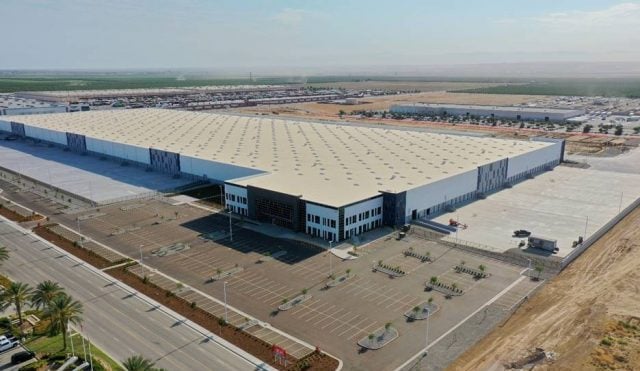SAN DIEGO—Mid-rise office space will be converted to lab space in the San Diego market before significant migration elsewhere, predicts CBRE's senior associate John Hundley. San Diego is the third-largest life-science cluster in the US, according to CBRE, and JLL reports that leasing is strong in this sector here, with the market seeing a total of 399,450 square feet of completed transactions that accounted for 259,761 square feet of positive net company growth in Q1. GlobeSt.com spoke exclusively with Hundley about the life-science real estate landscape in San Diego and major trends he's seeing in the sector.
GlobeSt.com: Can you give us a snapshot of the life-science real estate landscape in San Diego?
Hundley: The life sciences are various scientific disciplines that study living organisms and biotechnology to create solutions to specific problems. Medtech, device and diagnostics are also often in view when we refer to the life-science cluster.
The geographic landscape for the life-sciences sector is relatively well confined to the four core markets of Torrey Pines, UTC, Sorrento Mesa and Sorrento Valley in central San Diego and Carlsbad and Oceanside in North County. All of the major components of the life-science ecosystem are present in San Diego: big pharma, biotech, life-science real estate developers, service providers, academic and private-research institutes and capital markets—though venture capital is somewhat limited here.
In terms of growth drivers, personalized medicine and the intent to reduce healthcare costs will be the main drivers in the foreseeable future. I anticipate companies working in the areas of genomics and biologics will experience the highest growth. As an example, I was at an event and one of the leading scientists in genomics stated that several hundred genomic-related companies would be born in San Diego in the next three to five years.
GlobeSt.com: Who are the big companies in San Diego, who are the emerging companies and what unique products are coming out of the San Diego market?
Hundley: As it relates to life-science real estate developers, we are fortunate to have the big three REITs—Alexandria Real Estate Equities, BioMed Realty Trust and Healthcare Properties—as well as specialized developers like Phase 3 Properties, two of which are headquartered here in San Diego. Life-influencing R&D and collaboration are happening in the environments they create every day. Their collective investment and presence validate San Diego as a leading life-science innovation hub.
Illumina and the big pharma companies are well represented. A couple of early-state companies have captivated me. Edico Genome is a bio IT company that developed the Dragen Bio-IT processor. They have significantly reduced the amount of time to sequence the entire human genome. Their value proposition has helped them form powerful partnerships with companies and institutes like Intel and Stanford. Portable genomics, still in stealth mode, has a big vision relating to keeping and sharing personalized genomic information. Craig Venter's Human Longevity is another start-up poised to make a significant contribution leveraging genomics as it relates to aging.
Another amazing company is ViaCyte, a stem-cell-therapy company in its Phase 1/2 clinical trial with an incredibly complex technology entailing a patented differentiation process of stem cells to pancreatic beta-cell precursors enclosed and implanted in a device. Once implanted, the cells mature into endocrine cells that secrete insulin to help control blood glucose levels. They have a breathtaking vision to treat Type 1 diabetes and eliminate insulin dependence.
GlobeSt.com: Where is the funding coming from?
Hundley: We have seen significant funding activity year-to-date. The initial public offering window is open, venture capitalists are actively seeking opportunities and the M&A activity is unprecedented. Four San Diego companies have gone public so far, witnessing TEVA's $3.2-billion acquisition of San Diego's Auspex Pharmaceuticals, and the remaining rest in the pipeline. However, the funding models are evolving and early-stage companies and big pharma are mutual beneficiaries though the construct of “partnering” that will continue to develop. We will likely see creative combinations of investment activity by successful serial entrepreneurs and family offices (with special interests), as well as crowd-sourced funds that will play a role moving forward.
GlobeSt.com: Where are the companies now, and where will they be moving to? What does future lab space look like?
Hundley: As next-gen lab design, equipment and technology evolve, I anticipate we will see an evolution in San Diego toward densification, and mid-rise office buildings will convert to lab space before significant migration elsewhere occurs. As a result, next-gen labs will be more flexible and modular so a tenant can variablize their space on demand. In the future, it would be great to see some of the life-science cluster in Downtown. I think it offers a compelling opportunity, and if one or two catalytic-type tenants move into Downtown, such as UCSD research or a world-class institute like Sanford Burnham, more would follow. While the infrastructure is not currently in place, the amenities and environment are rich and improving. It is, in part, a talent question: if all the top talent live or want to live Downtown within 10 years, how can the life-science sector proactively anticipate and respond to that now?
GlobeSt.com: How can those in the commercial real estate industry who are not currently doing so capitalize on this growing sector?
Hundley: Owners of well-located assets in the core life-science submarkets stand to benefit through lease-up and/or sales activity. As we shift to densified lab spaces, more office-to-lab conversions will occur, and traditional office owners could benefit as the industry continues its shift to outsourcing and the virtual biotech and specialty pharma companies grow. Life-science tenants are seeking a workplace experience; therefore, specialized developers, traditional office owners and those who invest the time, capital and painstaking attention to detail, can create fresh, vibrant workplaces and capitalize on the sector.
© Touchpoint Markets, All Rights Reserved. Request academic re-use from www.copyright.com. All other uses, submit a request to [email protected]. For more inforrmation visit Asset & Logo Licensing.






